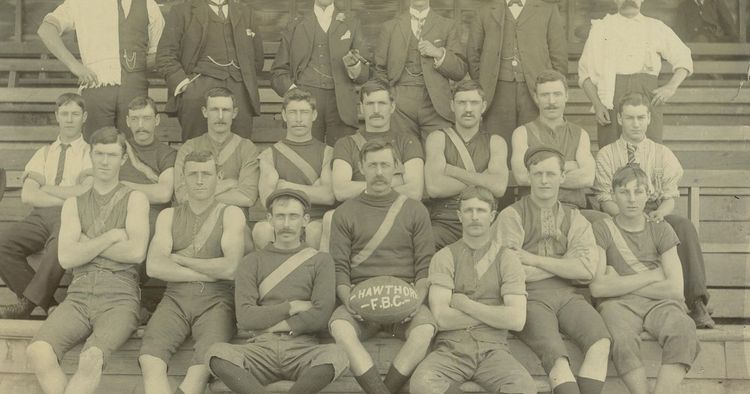Lest We Forget: Norman Forbes

1914 was the year that the Hawthorn Football Club joined the Victorian Football Association (VFA), playing in senior competition for the first time. 1914 also marked the start of World War 1. Among the many recruits were Hawthorn players, both VFA and those who had played for the club during its time in the Metropolitan Junior Football Association.
By Rachel Bradshaw, Hawks Museum
3 hrs ago
1914 was the year that the Hawthorn Football Club joined the Victorian Football Association (VFA), playing in senior competition for the first time. 1914 also marked the start of World War 1. Thousands rushed to enlist in a conflict that was seen as a patriotic adventure. Among the many recruits were Hawthorn players, both VFA and those who had played for the club during its time in the Metropolitan Junior Football Association.
The club’s records for our earliest years are not complete. Often, we have no photograph of our early players and only a smattering of statistics. Although research has, on occasion, uncovered new information about forgotten players from these years.
One such forgotten player is Norman McLennan Forbes. A younger brother of champion Colac athlete and footballer, Ivan ‘Tracker’ Forbes, he would play seven games during 1908. The Hawthorn team photo above is from that season. Forbes debuted in Round 9, unfortunately missing out on being in this, or any known team photograph.
Listed as being just over 5 feet, 5 inches tall and an all-round athlete, Forbes also played cricket and tennis for the local Hawthorn clubs. By the 1914 football season, he was playing for the Malvern Presbyterians in the South Suburban Churches competition. He had also played football and cricket for Parkville.
One of the first to enlist in August 1914, Forbes joined the 4th Battery of the 2nd Australian Field Artillery. He embarked for overseas service with the first convoy of Australian troops in October 1914. Landing at Gallipoli on April 25, 1915, Forbes served with his battery until he was wounded in September 1915. He returned to his unit and continued at Anzac until the December evacuation.
He wrote home from Gallipoli in July 1915. His letter, published in the Colac Reformer, described life at Anzac Cove. ‘Our first day ashore was one of our most exciting, bullets flying all around – I can tell you it makes you duck … Our gun pit is on the top of a hill 500 feet high, with the seas below and we command a fine view. We get plenty of exercise with the pick and shovel, digging gun pits.’
Forbes was promoted to the rank of Bombardier in March 1916, before the Australians arrived on the Western Front. Surviving harsh conditions and constant enemy fire, Forbes spent several weeks of November in the 9th Australian General Hospital, suffering the effects of Post Traumatic Stress Syndrome, known at the time as ‘shell shock’. He returned to his battery in time for one of the coldest European winters on record.
The last line in his service record states that he was killed in action near Bapaume, France on April 8, 1917. A report in Winner expands on the circumstances. ‘It appears that a German shell scored a direct hit on his gun … (he) was struck in the head and killed instantly.’ He was 26 years old.
Norman Forbes is just the latest Hawthorn player to be re-discovered. He is also a player for whom we hold no photograph. He joins the following players in making the ultimate sacrifice:
World War I
Hugh Callan (MJFA) John Joseph Collins (MJFA) William Minifie Field (MJFA) Don McConville, M.M. (VFA) Joseph Leo Skene (MJFA) Joe Slater (MJFA) Joseph Austin Sorby (VFA)World War II
Douglas Curphey (VFL 2nd 18) – ARMY John Montague Drake - ARMY Alfred Rowton Giblett - ARMY Lyle Bruce Hone - ARMY James Alexander Nash, D.F.M. - RAAF Richard Michael Pirrie - RAN John Frederick Price - ARMY Leonard Thomas - ARMY Geoffery Maxwell Wheeler - ARMY Leo ‘Gus’ Young - ARMY Harold Walter Zucher – ARMYLest We Forget
If you have a photograph or further information on Norman Forbes, or other players for whom we hold no photo, such as William Field or Don McConville please contact the Hawks Museum at [email protected] or (03) 9535 3075.



















































